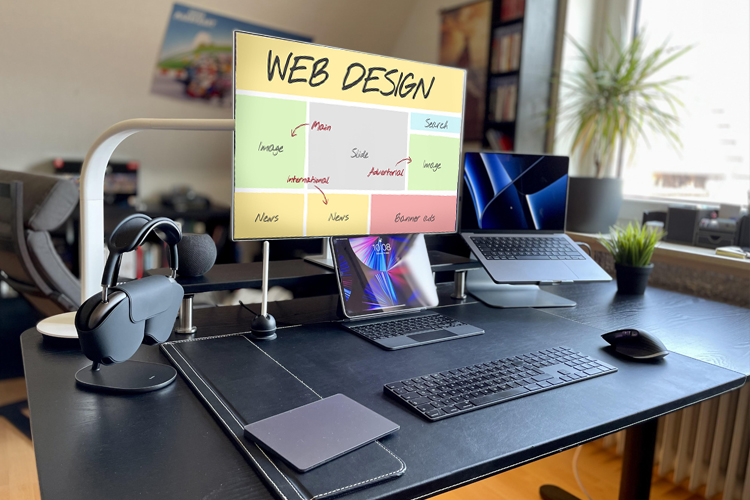Why should you care about privacy in UX?
While technology has eased a lot of process of our mundane life, it has also bought us in the purview of privacy risk. One is not oblivion to the need for privacy and its very need in the present time. One can find a plethora of email flooded in their inbox speaking about privacy and data policies. Additionally, with internet and increasing online presence has increased the risk one divulging out their personal and important details without being aware of it. Thus, this necessitates creating a protective wall in the ground level itself i.e. during the website designing phase.
Here in this article, we would delve deeper into the very need for privacy in UX, how it affects users and the ways to prevent data theft:
What is the need for Privacy?
In the present era, every other individual has their presence online, right from businesses to the common man. The digital world has opened a wide arena for businesses to interact with the target audience in addition to increasing the possibility of people to reach out to each other. While we view only the rosy side of the digital world, the dark side is still in hiding. The current digital platform has however managed to take us away from this primary need viz. PRIVACY.
Here is where arises the need for reversing the control from the hands of the companies and website holders to that of the users. This is done through UX designing which concentrates on fixing this very need and presenting to users a completely safe platform.
Now coming to the question, why is privacy in UX designing an important issue?
There has been numerous survey and research conducted with the view to validate the need for privacy. Let's take the example of a scenario here of booking your tickets online or for that matter paying bills online. Now, the next thing you will ask is how can paying bills put risk your privacy?
Well, to begin with, your single data comprises a huge set of information. Through your billing data, the companies or service provider can extract all information right from what device you use, where, how and when you are using your device. In short, your life is no more personal with each move under surveillance by the third party you are completely unaware of.
Doesn’t it make it essential to rest assured your information are on safe hands and won't be used for any nefarious activities? This drives us to the essential aspect as to how can one fix this and how can it be done? For this, lets readout below:
How to manage Data Privacy?
There are numerous websites on the internet which offers a myriad of service. In the present day, it is extremely difficult to cross out those which are considered susceptible. However, the criteria for ensuring privacy to users can be set by the company at the very start of website designing. As change is a constant part of evolution, the bar is now on how well is the design abreast to the requirement. As design too is evolving, conducting a constant study and creating better interfaces through expert designing ideas helps navigate privacy by users with much ease.
Thus, this puts the very need for reclaiming privacy and ensuring users a safe secured search on the shoulders of UX designing. In the next part of this article, we would sum up a few lucrative ways through which companies can put privacy as a part of the product as well as website designing:
- Keep them aware
A website renders user a medium to gain information about a certain product or service. They visit your website in search of useful data and thus it is necessary for the part of the company to ensure their personal information is safeguarded. Thence, whenever your user visits your website, keep them well in the loop about why you need certain data and how you will be putting them into use.
Creating a format or provision to “Skip” sharing of data in the website designing level creates a sense of trust as well as ensures users that their valuable information won't be misused.
- Let them test your app
Trail and error have always worked wonders. Instead of directly asking the user to create an account, you can build the UX design of the website in such a manner wherein the visitor is given the opportunity to use the application for a trial period and later create their account when rest assured sharing their data with you.
- Let the ball be on their court
Instead of letting the company decide what security options the user can have, giving them the provision to reset their password, OTP through email, multi-factor authentication or any feature that would help authenticate determines safeguard of privacy. And all this has to be incorporated at the time of website designing itself.
- Keep them updated
Not all users may be aware of data privacy. Thus. the onus here lies on the company and the UX designing team per se to make them aware. Let your users know what you are doing to improve the security of data, and make the privacy policies as clear as possible through either videos or graphics.
- Option to delete the account
Lastly, in scenarios wherein your users are unable to use a product or login into your website, render them the opportunity to delete their account and with it purge your database from your side. Also allowing them to anytime recreate their account when needed. More importantly, when they have deleted their account do not forget to let them know how much time it will take in exact to delete all the information permanently and which information will be retained. Thus, having a strong and crisp privacy policy is the ultimate crux.
Privacy in layman’s term deems a lot to common citizens, who have their entire life hanging in the tip. Building user trust and ensuring they are safe to visit the website can be done by reversing changes in the ground level of UX designing that sets the very pedestal of privacy in this techno era.







Comments
Be The First To Comment
Post a comment